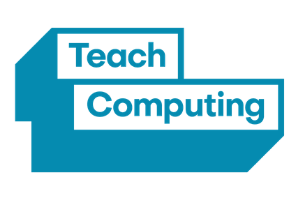Computing
At Aureus Primary School, we follow the Teach Computing curriculum which has been devised by experts from the National Centre for Computing Education in conjunction with the DfE.
At the bottom of this page, you can find a copy of the Key Stage 1 and Key Stage 2 Teach Computing Curriculum map.
Intent
A high-quality computing education equips pupils to use computational thinking and creativity to understand and change the world. Computing has deep links with mathematics, science, and design and technology, and provides insights into both natural and artificial systems. The core of computing is computer science, in which pupils are taught the principles of information and computation; how digital systems work; and how to put this knowledge to use through programming. Building on this knowledge and understanding, pupils are equipped to use information technology to create programs, systems and a range of content. Computing also ensures that pupils become digitally literate – able to use, and express themselves and develop their ideas through, information and communication technology – at a level suitable for the future workplace and as active participants in a digital world.
Through our computing education offer, we empower children to acquire and internalise disciplinary behaviours; there is a constant interplay between knowledge learnt, skills acquired and the ability to effectively express oneself grammatically in speech – Oracy. It is not enough for children to learn facts that they can recite or recall on demand to pass a test. Having a wealth of knowledge is irrelevant if they do not have the skill set needed to use that knowledge to better their position and therefore contribute positively to society. Furthermore, applying skills and using knowledge requires the most important element of all; the ability to communicate effectively. This will enable all children to think, behave, work and speak like a computer scientist.
The intent of our computing education offer is to empower our children to dream, believe and achieve no matter their starting points. Our curriculum is therefore written to incorporate a balance between knowledge acquisition by reducing the cognitive load, the development of skills and the development of vocabulary; and deliberate experiences with the real world and local community. The school’s curriculum is posited on the notion that knowledge acquisition is fundamental to a human’s development.
Implementation
The units for key stages 1 and 2 are based on a spiral curriculum. This means that each of the themes is revisited regularly (at least once in each year group) and pupils revisit each theme through a new unit that consolidates and builds on prior learning within that theme. This style of curriculum design reduces the amount of knowledge lost through forgetting, as topics are revisited yearly. It also ensures that connections are made even if different teachers are teaching the units within a theme in consecutive years.
The Teach Computing Curriculum is structured in units. For these units to be coherent, the lessons within a unit must be taught in order. However, across a year group, the units themselves do not need to be taught in order, with the exception of ‘Programming’ units, where concepts and skills rely on prior learning and experiences.
National Curriculum Computing Programme of Study
KS1 Teach Computing Curriculum Map










